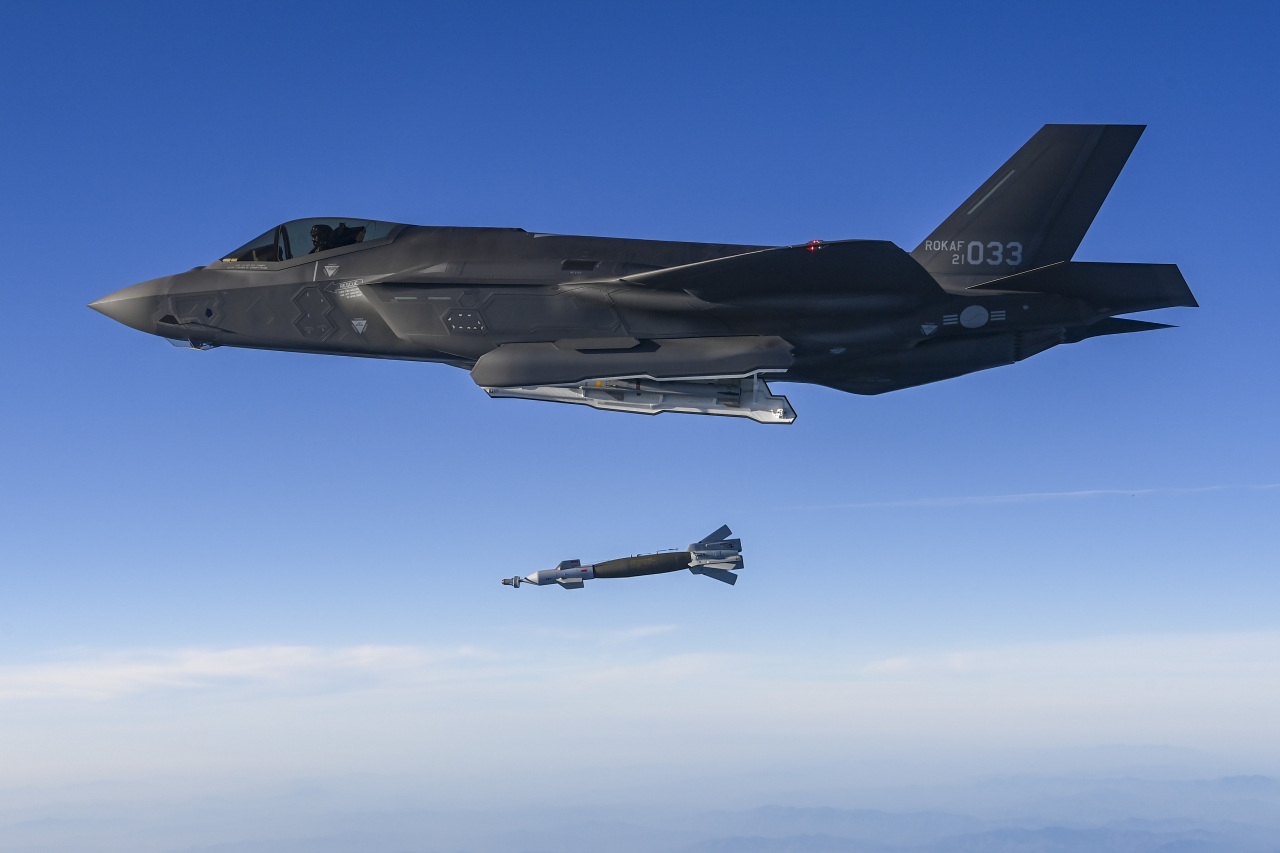 |
The South Korean Air Force's F-35A stealth fighter jets stage live-fire drills striking North Korea's transporter erector launcher (TEL) with US-made GBU-12 aerial laser-guided bombs on Friday afternoon. The drills were conducted in response to North Korea's launch of an intercontinental ballistic missile earlier in the day. (Joint Chiefs of Staff) |
The live-fire drills were staged at Pilsung Range in Kangwon Province in the afternoon, about six hours after the North Korean missile was launched to waters off Japan at 10:15 a.m., according to the Joint Chiefs of Staff.
The drills aimed to “demonstrate the ability of (South Korea’s) F-35 fighter jets with advanced stealth capabilities, to stealthily approach a target without being detected by the enemy and precisely strike the target,” the JCS said.
The South Korean Air Force’s four F-35A stealth fighters also flew with four F-16 Fighting Falcons of the US Air Force in a combined strike group over the East Sea.
The allies’ military actions came after South Korean President Yoon Suk-yeol instructed officials to strengthen the South Korea-US combined defense posture.
The missile, reportedly to be a new Hwasong-17 ICBM, traveled about 1,000 kilometers, reaching a top speed of Mach 22 and an altitude of around 6,100 kilometers. Japan said the ICBM would have a range exceeding 15,000 kilometers if fired at a regular trajectory, far enough to reach the US mainland.







![[Today’s K-pop] Blackpink’s Jennie, Lisa invited to Coachella as solo acts](http://res.heraldm.com/phpwas/restmb_idxmake.php?idx=644&simg=/content/image/2024/11/21/20241121050099_0.jpg)